
Great collector cars are still out there–just waiting to be found!
Sadly, there is very little reality in reality TV. That wouldn’t be so bad except for the fact that these shows are the only TV shows for the barn-find collector car aficionado.
Barn Find Road Trip is the antidote to all the manufactured collector “reality” shows. It’s a real-world, barn-find banzai run in which auto archaeologist Tom Cotter, his car collector pal Brian Barr, and photographer Michael Alan Ross embarked on a 14-day collector-car-seeking adventure with no predetermined destinations. It’s barn-find freestyle! Roaming the Southeast, they documented their day-to-day car search in photos and through stories and interviews. This trip is absolutely real and the same kind of junket any gearhead with the skills, knowledge, and time can undertake.
Cotter and company hit the road in Cotter’s 1939 Ford Woody, the kind of car that opened doors and started the conversations that revealed where interesting cars were squirreled away. The result? The discovery of over 1,000 collector cars and some of the most amazing barn-find stories Cotter has yet unearthed, all accompanied by Ross’ evocative photography. If you love stories of automotive adventure, this is the book for you!

The Saugus Speedway Scrapbook will stir the memories and stories of all who ever visited the place. Whether a fan, driver, or race official, the hundreds of photos and comprehensive stats in this book will take you back to:
The Super Track
Racers will tell you:
“To be successful at Saugus a guy really had to understand how to make a care handle.”
Fans will tell you:
“It didn’t matter too much what was running, we’d be out there every Saturday-sitting next to the same group of people year after year.”
Track workers will tell you:
“We had to keep on our toes because there was always something new happening.”
All of them will tell you:
“We sure miss that place!”

Over the years, the small-block Ford has remained one of the most popular and widely used engines on the planet. From the earliest Fairlanes and Mustangs to the latest Mustangs and light trucks, the Ford small-block has powered them all. With the amount of aftermarket support and rebuildable cores out there, you don’t have to worry about spending an arm and a leg for quality rebuild – especially if you do the teardown and assembly yourself.
In How to Rebuild the Small-Block Ford, CarTech’s unique Workbench format walks you step by step through a rebuild, including: Planning your Rebuild; Disassembly and Inspection; Choosing the Right Parts; Machine Work; Assembling your Engine; and First Firing and Break-In.
The Workbench format also gives you helpful hints and tips on performance upgrades, including cams, heads, ignition, induction, and more. It also points out problem areas to watch for, professional builder tips, jobs that need special care or special tools, and more. Whether you’re a first-time engine builder or a seasoned professional, this is the essential guide to rebuilding your small-block Ford.
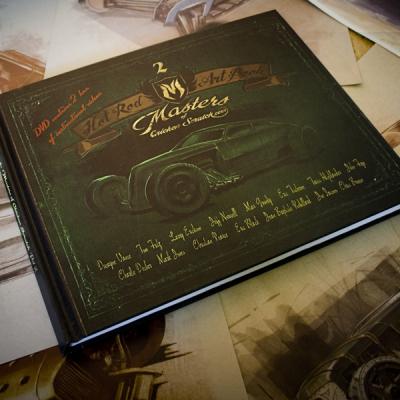
This is volume 2 to the highly successful Masters of Chicken Scratch volume 1. Volume 2 is bigger and better with a new larger format at 11.5 X 9 and over 150 pages of killer hot rod art. It includes new and a few returning artist. Names in this volume include Dwayne Vance, Tom Fritz, Larry Erickson, Jeff Norwell Max Grundy ,Eric Tscherne, Tavis Highlander , John Frye, Charlie Decker, Mark Jones, Christian Pearce, Eric Black, Jean Baptiste Robbi, Joe Iacono, Chris Brown. Only the best Hot Rod art goes into the Masters of Chicken Scratch series. Plus it includes a DVD with over 2 hours of instructional tutorials. It has truly earned the reputation for the Best Hot Rod Art book out there.

The Pontons may have been Mercedes-Benz’s bread-and-butter models of the 1950s, but they were vitally important in establishing the marque as a significant player around the globe. Alongside the saloons that made Mercedes famous world-wide for long-lasting and economical taxis, there were exotic two-door cabriolet and coupé derivatives, and the cars’ basic structure was made available too for conversion into ambulances, pick-ups, estate cars and hearses. Not always appreciated is that the 190SL sports model was also derived from the engineering of the Ponton range. The Ponton Mercedes and the 190SL have long enjoyed a strong enthusiast following around the world. Here is their story, from their creation at a time when Mercedes was emerging from the devastation of war, though their success during the German Economic Miracle of the 1950s, to their final days in the early 1960s alongside the first of the ‘Fintail’ models that would eventually replace them. No enthusiast of these widely respected cars will want to be without this book.
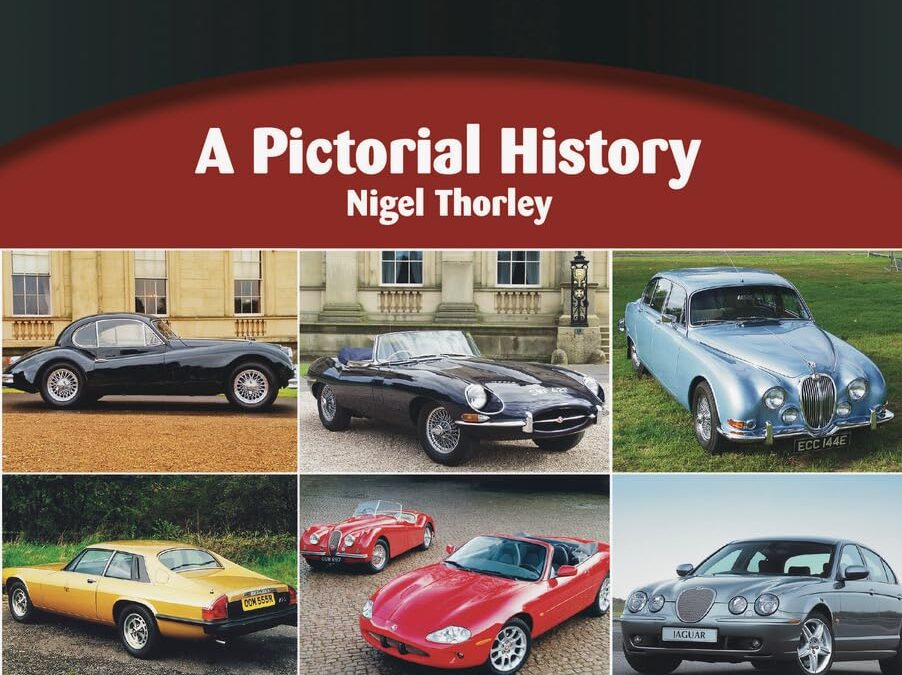
Jaguar Cars – A Pictorial History includes information covering Jaguar’s early history from 1922 and lists all model ranges and models thereafter, right up to the 2000s. With model-by-model descriptions and detailed technical information, this will be a great resource for all Jaguar and automotive enthusiasts. This book contains hundreds of photographs, obtained by the author during his years involved in the Jaguar Drivers Club and Jaguar Enthusiasts Club as well as those provided by the Jaguar Heritage archives. This Pictorial History includes: ·Detailed model-by-model comparisons, including changes in model production ·Extensively illustrated with colour and black & white photographs ·Body and interior styling identification and differences, along with colour schemes ·Detailed technical information and specifications ·Standard and optional equipment details ·Dashboard instrument layout drawings and photographs ·Production figures as a total or individual model where available

In over 50 years as a renowned motoring journalist and racing driver, Jeremy Walton has driven many, many hundreds of performance cars, but Fords have always been prominent among them and particularly close to his heart.
He was on the scene when fast Fords arrived in the early sixties alongside the Blue Oval becoming serious about motorsport. He has tested almost every significant performance derivative ever since, many straight from Ford’s competitions department. From Cortinas to Capris, Escorts and Sierras, via the epic GT40s to extraordinary Transit Supervans and into the new Millennium with Mondeo, Focus and Fiesta, Walton was there.
- Populars and Anglias: the ‘Berpop’ club racing special; Harry Potter boosts Anglia’s global fame; future Grand Prix talent within Roger Williamson’s Anglia; World Champion Graham Hill’s speedy Goodwood endurance week.
- Cortinas in all their variety: from the ex-Jim Clark British Saloon Car Championship winner to the author’s later BRM-tuned Cortina Lotus, plus three Uren-modified Savage V6 legends.
- Ford GT40s: driving experiences of two factory-owned examples, a pair of modern tributes and a privately owned example in Gulf colours.
- Supervans: Ford’s three generations of ludicrously fast Transits, variously with GT40 and Cosworth V8 engines.
- Rear-drive Escorts: numerous competition versions, including internationally celebrated RS1600s raced by John Fitzpatrick and rallied by Timo Mäkinen.
- Capris in profusion: all generations tested and raced, including the unique story of a 3-litre driven by Royalty and a triple World Champion; tales from the British Touring Car Championship, infamous ‘celebrity’ events and Belgium’s classic Spa 24 Hours.
- Front-drive Escorts: more racing experiences, Princess Diana’s immensely valuable Escort RS, plus a trio of wild rides in 550bhp turbocharged four-wheel-drive rallycross versions, setting records for electronically timed 0–60mph sprints.
- Sierras of many shades: from XR4i and XR 4×4 to Cosworth and RS500, including extensive racing, plus a winning factory World Rally Championship RS and the inevitable stolen road-test Cosworth RS.
- Works Escort Cosworth and Mondeo: still testing Ford’s finest into the 1990s, including two generations of Focus RS and Fiesta ST.
- American hearts: experiences with V8 Mustangs, Falcons and Thunderbirds, including a thundering NASCAR ‘T-Bird’ track test.
- American hearts: experiences with V8 Mustangs, Falcons and Thunderbirds, including a thundering NASCAR ‘T-Bird’ track test.
Presenting his extraordinary expertise and experience in his trade-mark colourful writing style, he puts the reader in the driving seat for a rollercoaster of exciting rides. Any enthusiast who has ever enjoyed a fast Ford will love this entertaining feast of nostalgia.
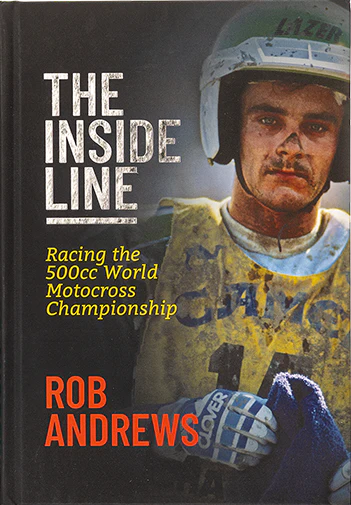
A unique, detailed, and comprehensive first-hand account of life as a professional racer competing and contending in the 500cc world motocross championship.
Tracing the journey of Great Britain’s Rob Andrews, from unremarkable amateur, through to factory Kawasaki rider, 500 GP contender, and member of Great Britain’s 1985 Motocross des Nations team, The Inside Line goes where no book has gone before: deep into the heart of life as a professional grand prix motocross racer.
Superbly illustrated with nearly 400 incredible images from some of the most acclaimed photographers in the industry, The Inside Line takes the reader on a fascinating odyssey of insight and intrigue.
Learn the inner workings of the grand prix motocross world, get answers to long-pondered questions, and discover things you never knew. There are facts that will surprise you, anecdotes that will make you laugh, and brutally honest, never-before-published information.
Find out how it felt to race against motocross legends on the world’s most famous and revered grand prix circuits. Discover what it was like to race a full-factory 500 for Team Kawasaki. Learn how the riders on the nomadic grand prix circuit lived, traveled, trained, and practiced while on the road.
Join Rob as he guides you – in his own words – through the highs and the lows, the adrenaline and the sacrifice, the jubilation and the occasional devastation of his extraordinary journey from raw novice all the way to the biggest stage of all: the 500cc world motocross championship.
And by the end you’ll understand just what it was like – and just what it took – to be a grand prix motocross racer.
The Inside Line is a mammoth, heavyweight, 416-page, 93,000-word hardback book of uncompromising quality and detail.

Dan Sharp examines the aircraft’s technical development in unparalleled detail as well as analyzing the ongoing discussions surrounding the Me 262 at the highest levels within the Messerschmitt company, the German Air Ministry and Adolf Hitler’s inner circle.
There are many myths surrounding the development of the Messerschmitt Me 262 jet fighter. Its unparalleled performance is beyond doubt; easily able to outpace its opponents and possessing the firepower to shred them in seconds. Yet immediately after the Second World War, rumours abounded that official indifference, technical shortcomings and interference from the Führer himself had crippled the Me 262’s progress and delayed its appearance on the front line until it was far too late.
Begun as a series of design concepts during 1938, the fighter would not enter mass production until the spring of 1944. Even then it failed to make any notable impact until the closing weeks of the war, when Me 262s began destroying USAAF bombers at an alarming rate. Exactly what happened to cause this apparently late start and who was responsible has until now been largely a matter of conjecture.
Grounded in research involving thousands of wartime documents spread across archival collections in three countries, Messerschmitt Me 262 Development & Politics finally sweeps aside the myths and provides a clear understanding of the real history. Sharp examines the aircraft’s technical development in unparalleled detail as well as analysing the ongoing discussions surrounding the Me 262 at the highest levels within the Messerschmitt company, the German Air Ministry and Adolf Hitler’s inner circle.
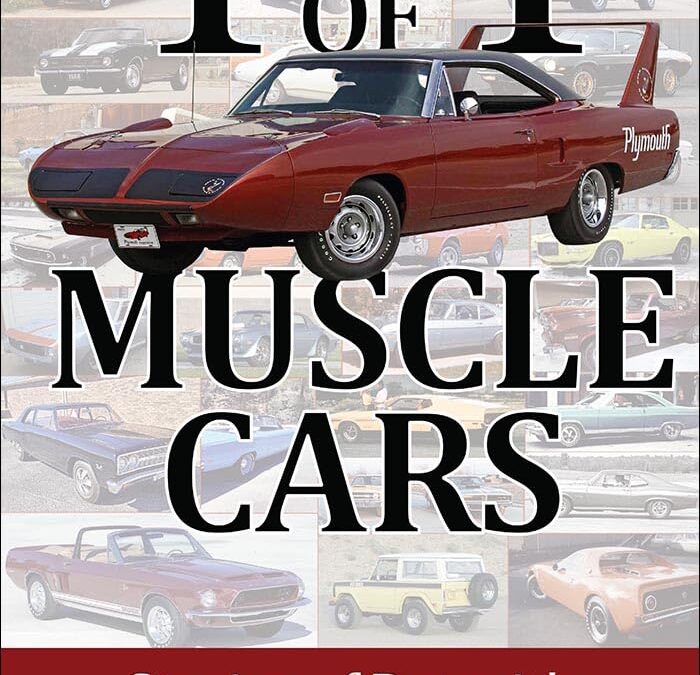
Learn about the rarest muscle cars ever produced with this new book.
In the world of muscle cars, many were produced and sold in large enough quantities that they would be considered special but not particularly rare at the time of production. The Boss 429 and Plymouth Superbird were produced for racing homologation reasons, and since they were very expensive to produce, the manufacturers ensured that they would be rare. However, there is rare, and then there is rare.
Prototypes and special factory builds, factory production cars, and super car tuners and builders are all covered in this new book by muscle-car historian Wes Eisenschenk. Some are single examples, some are very close to being the last remaining example, and all are extremely rare. Some have no surviving example known to exist. Featured cars include a Boss 429 Cougar, a 1971 Pontiac Ventura II Sprint 455, a 1965 Chevelle 300 COPO car with the L78 option, and a 1970 FK5 Deep Burnt Orange Metallic Superbird. Dealer promotional specials include a 1968 AMC AMX Von Piranha, a 1970 Dick Harrell LS6 454 Camaro, and a 1973 Nickey Chevrolet 427 Nova.
These are cars that you will read about but likely never see. For a fun ride through muscle-car history and great stories of the rarest muscle cars ever produced, add this book to your automotive library today.
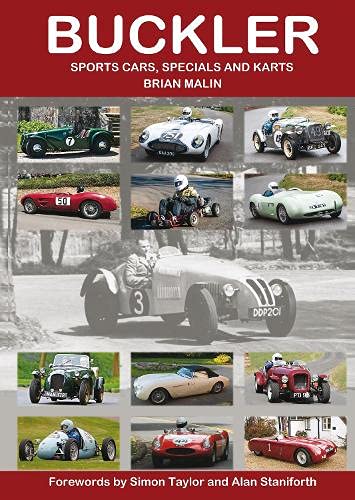
Although they were born 18 years apart, Derek Buckler and Colin Chapman were contemporaries when it came to designing and building ground-breaking sports cars in the late 1940s and early ’50s. They had much in common. Both were innovators, especially in areas of chassis design and improving the handling characteristics of their cars. Both founded successful companies and both died relatively young, Chapman in December, 1982, at the age of 54, and Buckler in 1964 at just 53 years of age. Yet, while Chapman’s Lotus went on to achieve worldwide fame, the name Buckler remains comparatively little known.
Special building was popular in the 1950s, mostly using ‘donor’ chassis from Austin 7 or Ford or simple ‘ladder’ frames but Buckler offered a multi-tubular space frame which was both stronger and lighter and, moreover, available in different models to suit different applications. He was also always ready to adapt his products to his customers’ requirements. In all of this, Buckler’s aim was to provide the impecunious enthusiast with a versatile sporting vehicle which could be used as daily transport during the week and, at weekends, in a wide range of motor sporting events from trials and driving tests to out and out racing. Often, however, the resulting Special would carry a name that concealed the Buckler contribution and a major part of the significance of Malin’s book and the vast amount of painstaking research put into it by its author is that much of that contribution is now revealed.
Buckler also, of course, made a range of complete cars starting with the versatile Mk5 and 6 and going on to encompass DD1 and DD2 with De Dion rear ends and the BB100 with backbone chassis introduced considerably before Lotus’s Elan and their other similarly based models. When karting became popular in the early 1960s, Buckler’s space frame technology found another application for which it was ideal and it became a major player in this burgeoning branch of motor sport. Buckler was also successful with its range of accessories including engine and transmission components and most notably its much admired close-ratio gears.
Brian Malin, the author, first owned a Buckler car in the 1970s and today competes in his Mk 5 in hill climbs and other events. He is an active member of the Buckler Register as well as the British Historic Kart Club and is often to be seen racing or demonstrating his Buckler kart so he is well placed to compile this comprehensive history of all things Buckler. It was first made available in loose-leaf form as long ago as 1990 but this is its first publication as a fully-fledged book, revised, updated and with additional material. Chassis design guru – and Buckler owner – the late Alan Staniforth provided the original foreword and this has been updated and included along with a new foreword by commentator and doyen of motor sport journalists, Simon Taylor.
The fourteen chapters begin with ‘Buckler and the Company’, cover the production and racing cars with some individual histories, the Buckler accessories including one chapter on the badges alone, overseas distribution – New Zealand was a particularly strong market for Buckler – and a fascinating section on the car advertisements before going on to cover the kart story in similar detail. The same number of appendices include reproductions of road tests, articles written by Derek Buckler, specifications of close-ratio gears and Buckler-tuned Ford engines, kart track tests and even one on Buckler letterheads. Malin’s work is truly encyclopaedic and therefore remarkable value for money not just as a reference on the Buckler marque but for its entertaining insight into the world of amateur motor sport of its time. The hundreds of illustrations range from reproductions of high quality contemporary and recent photographs to some admittedly lower quality originals, some of them obviously retouched to improve clarity, whose inclusion is well justified for their essential contribution to the Buckler story.
Brian Malin is to be congratulated for his perseverance in finally bringing to publication a book which is, to all intents and purposes, the full Buckler story.
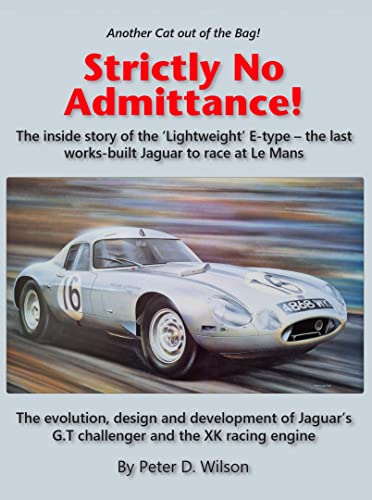
This impressive, large format book tells the inside story of the ‘Lightweight’ E-types. Built just in 1963, they are now amongst the rarest and most desirable of the race cars which came from Jaguar’s famous Competition Department – to which indeed there was ‘Strictly No Admittance’ for ordinary mortals! The book covers the evolution, design and development of Jaguar’s G.T. challenger and its XK racing engine. It is written by automotive engineer Peter Wilson who himself worked in the Competition Department throughout the period, where, together with his colleagues, helped build, and develop the production E-type through to its final form – the highly competitive and successful ‘Lightweight’ E-type. Peter’s remarkable recall of those events 60 or more years ago is reinforced by the hundreds of hours he spent in the Jaguar Daimler Heritage Trust’s impressive archives, and by many conversations with his former colleagues at Jaguar. The result is a book of astonishing detail (every single engine ever used by the factory in Lightweight E-types is, for example, identified and fully documented), while Peter’s account of how the car evolved from previous models, and the technicalities of how the engine, transmissions, brakes and bodywork were built and developed, are recorded in unprecedented detail. “The Lightweight E-type was created under the aegis of Jaguar’s founder, Sir William Lyons, and his engineering director William Heynes CBE”, writes publisher Paul Skilleter. “But the cars needed to be built and maintained, and Peter takes us into that ‘holy of holies’ and introduces us to the men who created the Lightweight E-type ‘in the metal’. “However, in successfully persuading Peter Wilson to follow up his XJ13 book with one on the Lightweight E-type, I hadn’t realised what I had let myself in for… The sheer quantity of words, graphs, diagrams and pictures which Peter presented me with was breathtaking – as was also the huge depth of the research clearly

The story of a boy with a big four-wheel dream
There are men who fall in love with a dream when they are young and do everything they can to make it come true. Romano Artioli is an entrepreneur pursuing his desire to revive the world’s most prestigious automobile brand, Bugatti. With passion and dedication, he achieves this goal. Born in Mantua, birthplace of Nuvolari, the most famous race car driver of all time, Romano opens his first auto service centre in Bolzano at the age of eighteen, buys a hydraulic test bench and begins overhauling engines, immediately demonstrating great skill.
And he founds dealerships, imports cars and becomes president of the local automobile club. He understands the importance of going all out to meet the demands of his customers, who become his friends and help him sell cars.
He convinces Enzo Ferrari to entrust him with management of the brand not only in the Triveneto, but in southern Germany as well.
After amassing experience for years travelling the world, it’s time for him to make his boyhood dream come true: he charms the French government and arranges for the sale of the Bugatti brand.
Then, having been abruptly prevented from selecting a powerful partner among the many who were interested in developing Bugatti and ensuring its future as an independent brand, he acquires the crisis-ridden Lotus Group and rapidly restores it to its former grandeur.
There, he introduces new models with great success, such as the special Lotus Elise, named after Romano’s young granddaughter.
Exploiting the unique untapped potential of his technicians, who work with passion and total commitment. In the mid-nineties, the Bugatti EB 112 is named “the world’s most beautiful sedan”.
But as in a classic thriller, just when everything seems to have turned out right comes the sneaky and unexpected twist that changes everything. With endless twists and turns and a long line of bankers’ traps, lawyers’ scams and ravenous businessmen, Bugatti & Lotus Thriller tells the story of a great dream of genius and creativity that stirs passion in every petrolhead the world over.
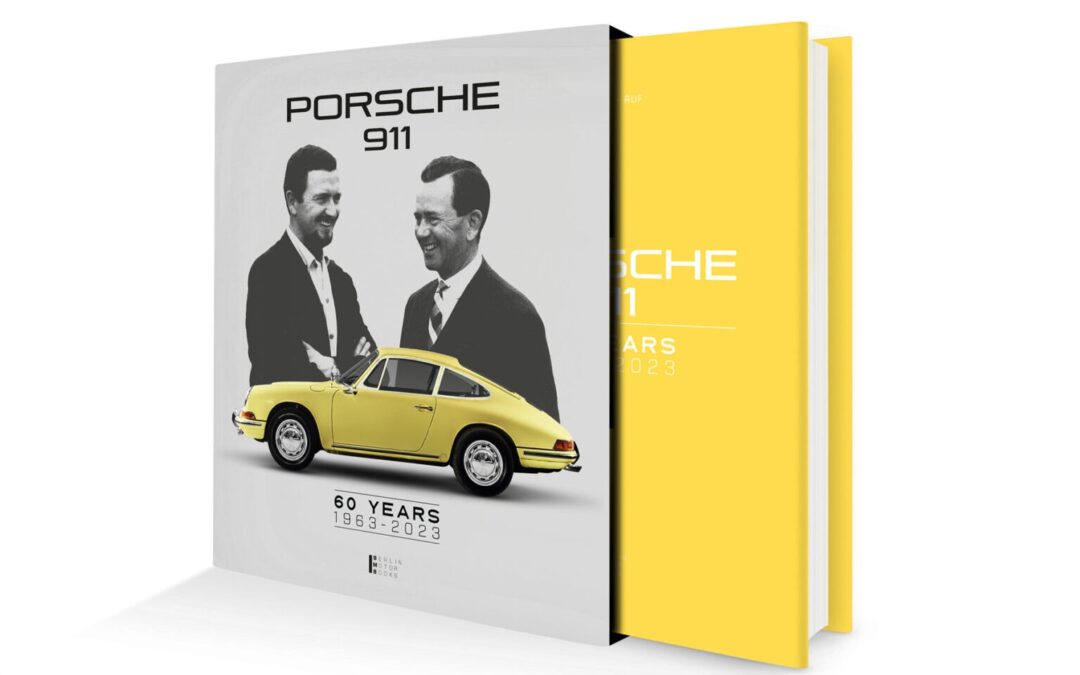
To mark the 60th anniversary of the Porsche 911, Berlin Motor Books has published the book PORSCHE 911 60 YEARS 1963-2023, limited to 911 copies.
Special features in this book
- Limited to only 911 units
- Each copy is individually numbered
- Detailed purchase advice and price trends
- Detailed presentation of all 82 Porsche 901 from 1964
- Extensive information on all 901 prototypes
- All colors of the Porsche 901 and 911 2.0 (Ur-Elfer)
- Unpublished historical visual material
The nine-eleven has been in production for over 60 years!
More than 60 years have passed since the Porsche 911 was presented at the Frankfurt Motor Show in September 1963, still as the Type 901. If things keep going this way, the Porsche 911 will surpass the 65-year production run of the VW Beetle (1938-2003). The book “Porsche 911 -60 Years” takes an in-depth look at how a small team of employees was able to create a sports car legend that is still unmatched today.
Interviews with the most important developers of the Porsche 911
All the important contemporary witnesses to the development of the 911 have their say in detailed interviews, including visionary Ferry Porsche, who came up with the only sensible concept for the successor to the 356.
And, of course, a detailed conversation with F.A. Porsche, under whose direction this century-old design in automotive engineering was created, is not to be missed.
Porsche engineering legend Hans Mezger reports on the development of the 911 engine, but Helmuth Bott, Peter Falk and Herbert Linge also provide intensive insights into the exciting period of 911 development.
All 82 Porsche 901 from 1964 are presented
In addition to interviews with contemporary witnesses, the book presents unpublished color photographs of the 901 presentation tour in 1963 and 1964. In addition, all 82 Neunelfer models that rolled off the production line as the Type 901 at the start of series production can be presented in detail for the first time.
The story of the 901 prototype quick blue is told
The book also takes an in-depth look at the first sales brochures and the color palette of the original 911. The book is rounded off by a detailed buying guide, which “Mr. 901”, Alois Ruf has created exclusively. There is probably no other expert in the world who knows more about the Porsche 901 prototypes and the very early 911s. Alois Ruf also owns the oldest Porsche 911 ever and reveals in an interview how he came to own this sensational one-off.
Oversize hardcover in slipcase
Text in English and German
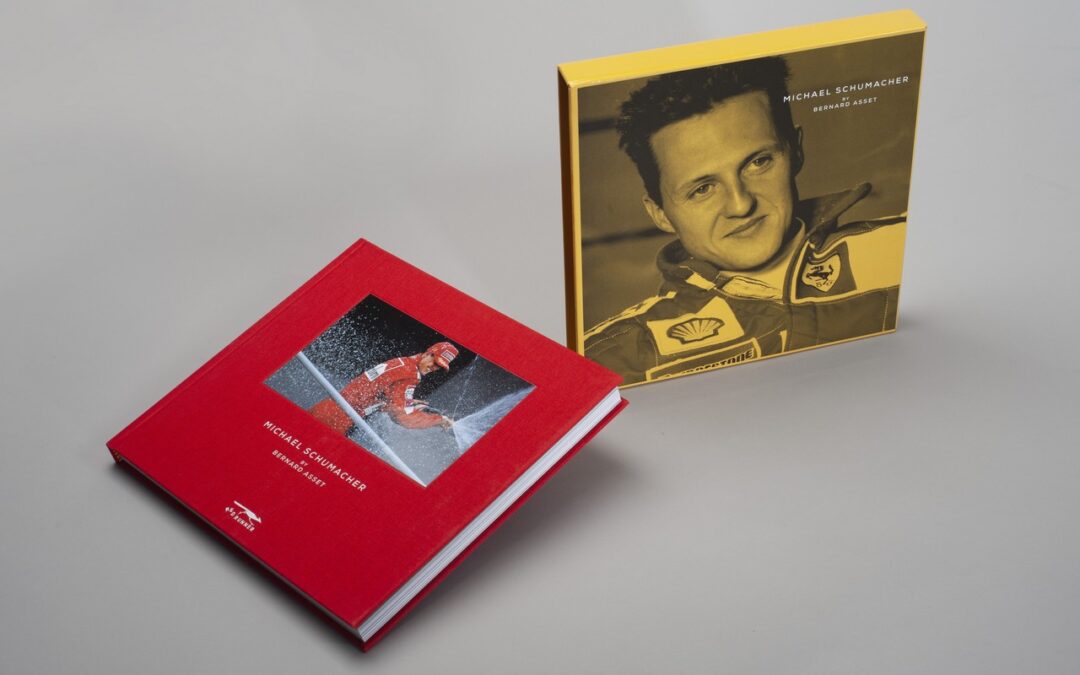
When the legendary photographer Bernard Asset asked us to edit his photo-album about Michael Schumacher, we accepted with great enthusiasm.
But it wasn’t just because of the prestige of the ‘Red Baron’, or the exceptional quality of Bernard’s photographs; we were interested because of the approach.
The concept of the book allows the reader to discover Michael Schumacher from a new angle. More intimate, more personal. In addition, we had the chance to interview engineers, team principals, and drivers he met along the way; and it gives this album a genuine human touch. In order to enhance the exceptional material, we strove for a very high quality finish; selective varnishes, metallic numbered pictures, red cloth cover and tailor-made protective slip case… we have achieved the best tribute we could to the driver, and to the photographs.
Finally, there is a wonderful introduction written by Jean Todt.
Each volume is printed in a limited and numbered run of 1000 copies.

Bentley Speed 8 – Limited Edition
Motorsport Book of the Year Award 2023 (Royal Automobile Club)
Limited to 550 numbered copies
Exactly 20 years ago, Bentley won the 24 Hours of Le Mans for the sixth time. Just three years earlier, the project was born from within the brand. The later Bentley Motorsport Director Brian Gush secured the internal support of the corporate siblings VW and Audi and rolled out the Speed 8 project. There, where Bentley had established its motorsport heritage between 1924 and 1930, the aim was to revive the brand and make a clear statement. Already in the first year 2001 a small sensation was achieved with a podium finish, in 2003 the legendary double victory followed after intensive development and test work.
In this comprehensive book, former team members, engineers and drivers have their say and quite a few of them contributed their photos. Starting with wind tunnel tests, the construction of the eleven chassis, test drives and races, author Andrew Cotton covers the entire development and racing history of Bentley’s Le Mans winner of the modern era. In the course of his research he had access to all e-mails, documents and drawings of the team and he interviewed all important contemporary witnesses who were involved in the project. This standard work on perhaps one of the most beautifully designed sports cars of the modern era is rounded off with the chassis history of every Bentley Speed 8 built.
Hardcover in slipcase
Text in English
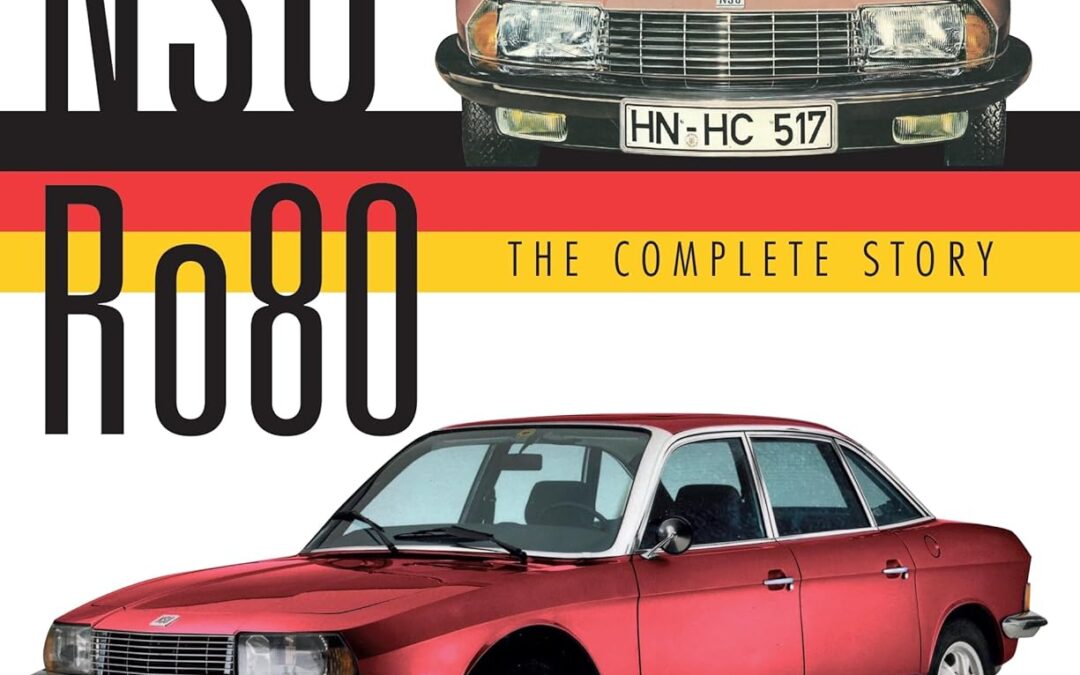
Launched in 1967, the NSU Ro80 had modern aerodynamic styling, a technologically advanced Wankel rotary engine and was voted Car of the Year in 1968. However, after the initial positive reception, the car developed a reputation for unreliability, with problems arising as early as 15,000 miles and many vehicles required a rebuilt engine before 30,000 miles. Despite the company resolving these reliability issues in both existing and new vehicles, and offering a generous warranty, the damage to the car’s reputation was done. The NSU Ro80 is the most celebrated motoring lost cause of the second half of the twentieth century, outranking the likes of the Edsel and the DeLorean because, unlike those statements of misplaced optimism and ego, it was a good car. Not just good: the NSU Ro80 is one of the great saloons. Launched in September 1967, the Ro80 was an all-new four-door five-seater from a West German company that – post-war – had never made anything other than economy runabouts, motorcycles and mopeds. That alone should have been enough of a risk, but this was also the world’s first purpose-built Wankel-engined family saloon. This compact, refined and elegantly simple power unit was the first really new concept in the realm of internal combustion engines to achieve mass production for ninety years. A car like the Ro80 could only really have come from Germany, where there was a passion for research and a pride in engineering not found elsewhere in Europe. With front-wheel drive, superb power steering and four-wheel disc brakes, the car had top handling and driver appeal. Quite simply, it was a masterpiece, considered by many to be the finest vehicle of its type in the world. But with one fatal flaw: its engine. With over 300 archive photographs, drawings and diagrams, this book tells the story of the NSU






















